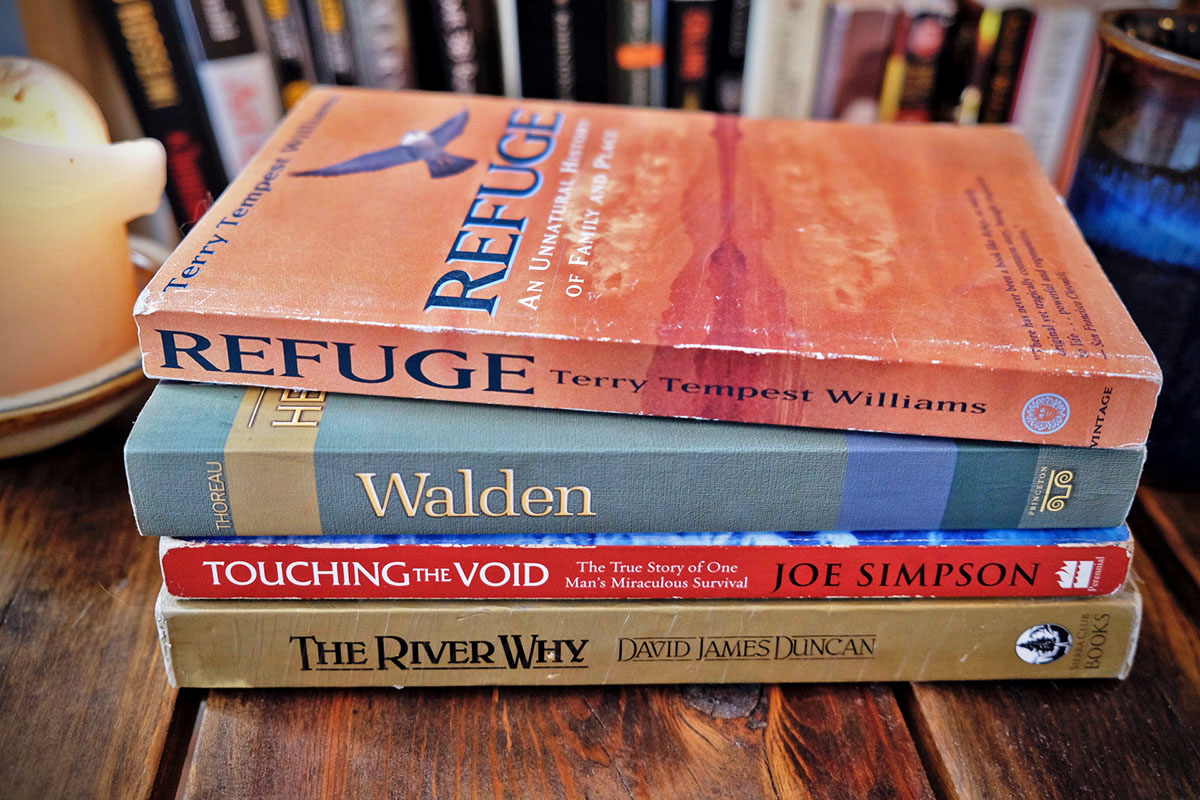
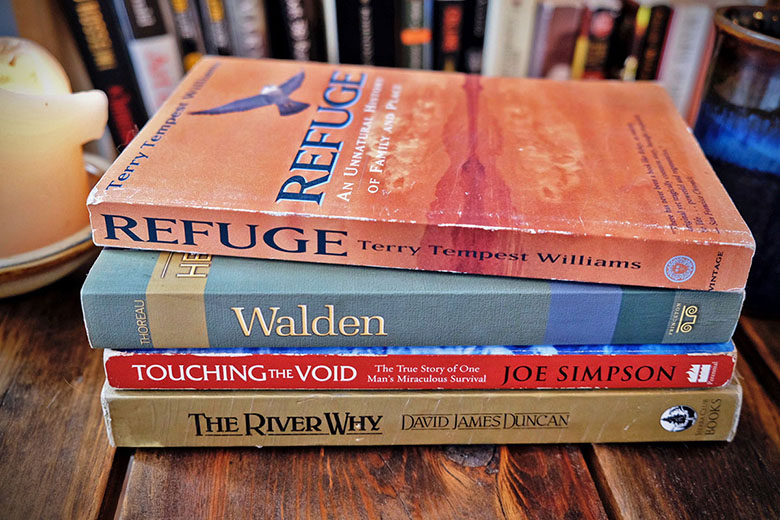
Switchback Travel


Switchback Travel
At Switchback Travel, we love stories. Nothing moves or motivates us quite like artfully written and insightful accounts of the world. And while the online format is great, we’d be lying if we said we didn’t have a soft spot for books. So we thought we’d share our favorites with you: reads that have inspired us to look at our world with fresh eyes, to say yes with more conviction, and create adventure sagas of our own. We should note that this is not a comprehensive list (that would be impossible), nor is it objective. This is simply our way of sharing some of what has been most meaningful to us. Without further ado, we bring you The Switchback Travel Outdoor Adventure Book Hall of Fame. We hope you enjoy them as much as we did.
The cautionary tale of Alexander Supertramp, a young man who leaves behind everything and everyone on his search for truth.
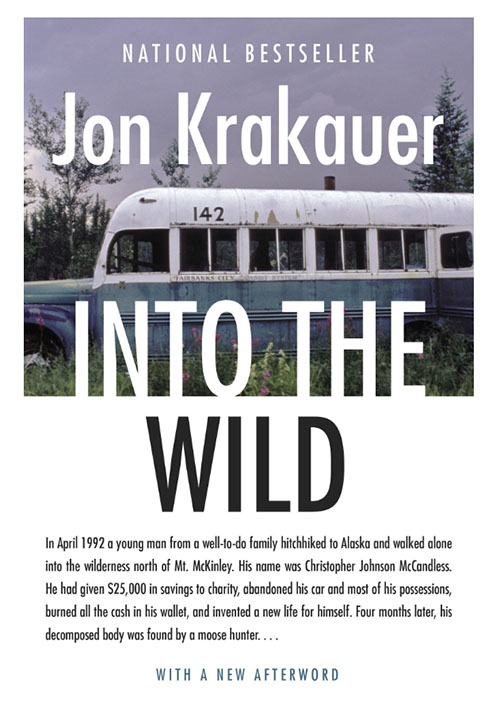 “Alaska has long been a magnet for dreamers and misfits, people who think the unsullied enormity of the Last Frontier will patch all the holes in their lives. The bush is an unforgiving place, however, that cares nothing for hope or longing.”
“Alaska has long been a magnet for dreamers and misfits, people who think the unsullied enormity of the Last Frontier will patch all the holes in their lives. The bush is an unforgiving place, however, that cares nothing for hope or longing.”
Chris McCandless is relatable enough—suburban born and bred, disenchanted with the life laid out for him, young, intelligent, bristling with energy. The story of his life reads like a predictable novel until he cashes in everything for nothing and transforms himself into Alexander Supertramp. Of Jon Krakauer’s many fine works (he’s the only author with two books on this list), this may be his best. And while Krakauer has received some criticism for what may have been an immodest amount of personal narrative woven into what is largely a biography, the end result is a stunning piece of literary nonfiction. Krakauer succinctly captures the angst and familial strife that led to McCandless’ defection from society, leading him down the Colorado River to Mexico and eventually up into the Alaska wilderness, and manages to keep you on the edge of your seat from start to finish. Both tragic and uplifting, frustrating and inspiring, McCandless’s adventure surely is one for the ages.
See Into the Wild by Jon Krakauer
A seminal story on man’s relationship with wilderness.
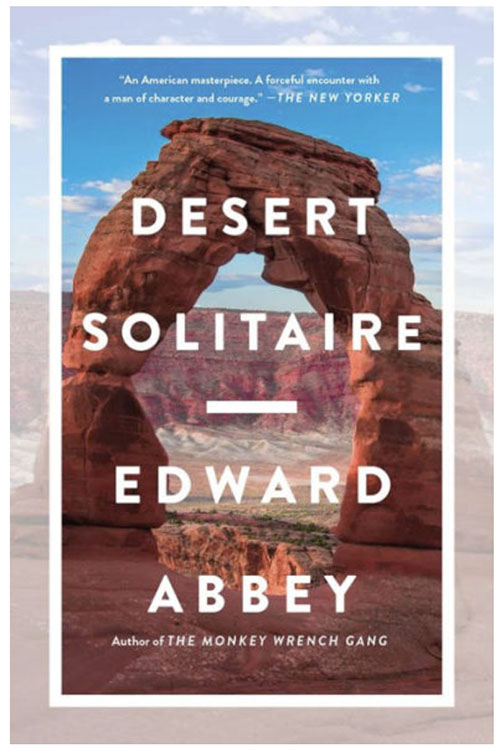 “This is not a travel guide but an elegy. A memorial. You’re holding a tombstone in your hands. A bloody rock. Don’t drop it on your foot—throw it at something big and glassy. What do you have to lose?”
“This is not a travel guide but an elegy. A memorial. You’re holding a tombstone in your hands. A bloody rock. Don’t drop it on your foot—throw it at something big and glassy. What do you have to lose?”
It would be difficult to write something new and novel about Desert Solitaire, as so much has already been said, but we’ll try. Perhaps no other book has so well captured any landscape, much less matched its harsh indifference to human predilections. “Cactus Ed” Abbey, it seems, couldn’t care less what you think about him or his book, so long as you respect the desert that he loves so well. Desert Solitaire winds a serpentine trail through the red rock desert of southeastern Utah, from illegal forays down soon-to-be-dammed rivers, to body recoveries, psychedelic vision quests in search of lost horses, and seemingly every subject in between. The chapter titled, “Polemic: Industrial Tourism and the National Parks” was not only prescient, but also one of the first (and more memorable) attempts to frame the great conservation paradox: you can save wilderness for people, but that doesn’t equate to saving wilderness from people. Cactus Ed takes us on many fine adventures, but his most outlandish excursion may be attempting to tell his own unfettered and beautiful truth without kowtowing or curtseying to conventional style, wisdom, or the powers that be.
See Desert Solitaire by Edward Abbey
The best book ever written about surfing—and the only one to win a Pulitzer Prize.
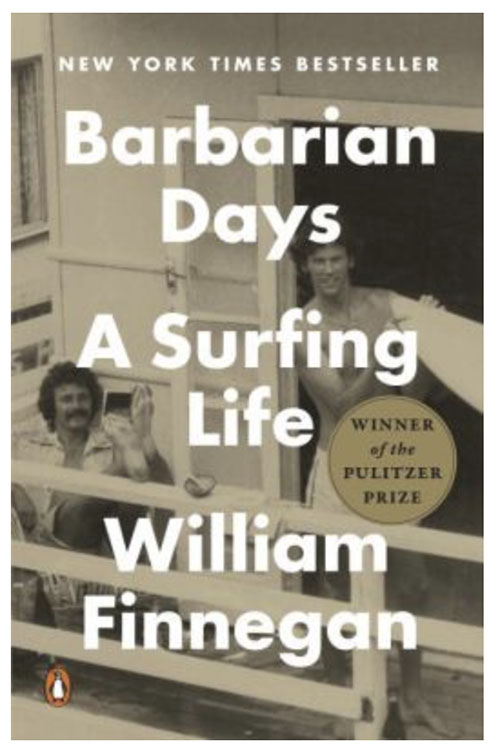 “But my utter absorption in surfing had no rational content. It simply compelled me; there was a deep mine of beauty and wonder in it. Beyond that, I could not have explained why I did it. I knew vaguely that it filled a psychic cavity of some kind—connected, perhaps, with leaving the church, or with, more likely, the slow drift away from my family—and that it had replaced many things that came before it. I was a sunburnt pagan now. I felt privy to mysteries.”
“But my utter absorption in surfing had no rational content. It simply compelled me; there was a deep mine of beauty and wonder in it. Beyond that, I could not have explained why I did it. I knew vaguely that it filled a psychic cavity of some kind—connected, perhaps, with leaving the church, or with, more likely, the slow drift away from my family—and that it had replaced many things that came before it. I was a sunburnt pagan now. I felt privy to mysteries.”
The term "inside baseball" may as well refer to surfing. Even today, when the sport has become more mainstream, it retains much of its counterculture charm. Typically, inside baseball is a no-no in social gatherings and literature. But Barbarian Days takes that paradigm and dashes it on the shore like flotsam and jetsam. Finnegan’s tale of a life molded by the sport of surfing is breathtakingly technical and acutely accurate, but somehow remains relentlessly interesting. We start when Finnegan and the sport are both young, following their coalescent journey all over the world. It seems no stone (or wave) is left unturned, as the author drifts from Hawaii to California, Fiji to Indonesia, Africa to Portugal, San Francisco to Manhattan. The result of Finnegan’s stunning memoir is one part travel narrative, one part sport genealogy, and one part coming-of-age. You truly don’t have to be a surfer, or even a fan of the ocean, to enjoy this book: If you’ve ever wondered what in the world you’re doing with your life, that is prerequisite enough to find yourself in Finnegan’s target audience.
See Barbarian Days by William Finnegan
A classic story of survival and coming of age, and a great adventure book for young people.
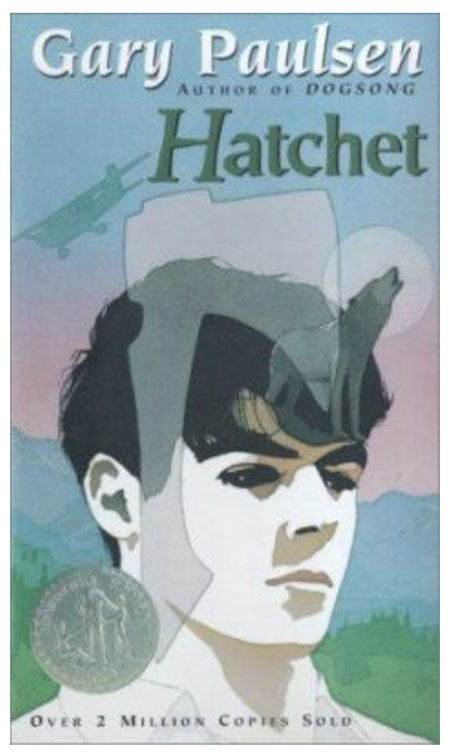 “He looked back on this time of crying in the corner of the dark cave and thought of it as when he learned the most important rule of survival, which was that feeling sorry for yourself didn't work. It wasn't just that it was wrong to do, or that it was considered incorrect. It was more than that—it didn't work.”
“He looked back on this time of crying in the corner of the dark cave and thought of it as when he learned the most important rule of survival, which was that feeling sorry for yourself didn't work. It wasn't just that it was wrong to do, or that it was considered incorrect. It was more than that—it didn't work.”
"This is the book that made me love the outdoors," says David Wilkinson, Switchback Travel’s Founder. He, of course, is not alone: Hatchet is something of a cult classic. The epic story of thirteen-year-old Brian Robeson—whose plane goes down in northern Canada, killing the pilot and leaving Robeson with nothing but a hatchet to fend for himself in the wilderness—is gripping and memorable. But Robeson’s trials and tribulations are just the vehicle for Paulsen to deliver a raft of valuable life lessons. And whether that reader is a young adult (Paulsen’s intended audience) or a full-fledged grown-up, these lessons carry weight, value, and timelessness. Everything in this book is expertly cultivated, from mountain scenery to the landscapes of the mind. Whether you remember it from your teens or approach it for the first time as an adult, Hatchet is a must-read.
See Hatchet by Gary Paulsen
The author attempts to leave her troubles behind on a thru-hike from California to Washington.
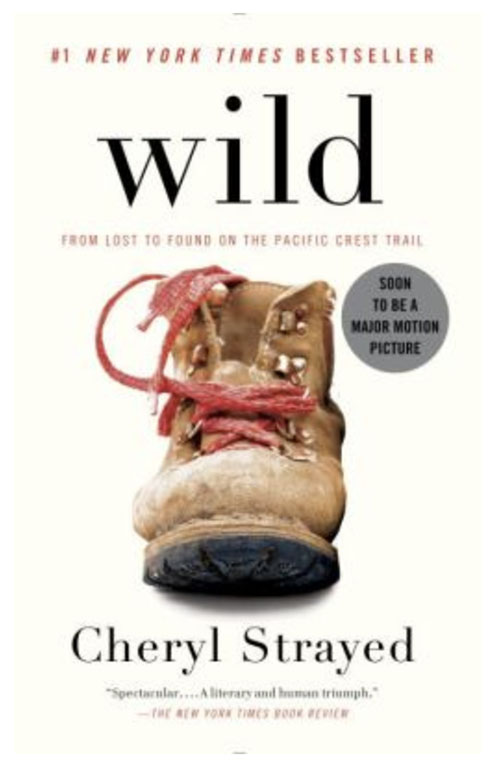 “Fear, to a great extent, is born of a story we tell ourselves, and so I chose to tell myself a different story from the one women are told. I decided I was safe. I was strong. I was brave. Nothing could vanquish me.”
“Fear, to a great extent, is born of a story we tell ourselves, and so I chose to tell myself a different story from the one women are told. I decided I was safe. I was strong. I was brave. Nothing could vanquish me.”
The best-known version of Wild is the movie starting Reese Witherspoon, but Cheryl Strayed's book was a New York Times bestseller long before that. From a literary perspective, it’s a home run, striking a chord with so many who have the urge to leave their daily lives and troubles behind and break away. From an adventure perspective, it highlights women in the outdoors and the fascinating subculture of thru-hiking, along with all of the trials, tribulations, and personal growth that (hopefully) come along with it. We particularly admire that Cheryl’s experiences—from the Mojave Desert in California all the way up to the forests of Washington State—are not glamorized. From day one, the book reveals the monotony, physical pain, mental anguish, rainy days, awkward social interactions, and soul-searching moments (often alone) that a hike like the Pacific Crest Trail really does entail. On a broader level, the book further catalyzed the outdoors movement for women and cemented the fact that you certainly don’t need a man to go hiking.
See Wild by Cheryl Strayed
An introduction to the fascinating life and words of John Muir.
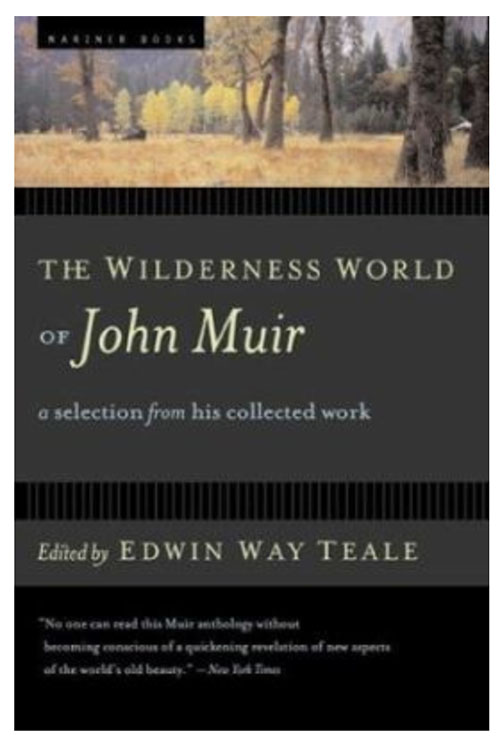 “Everybody needs beauty as well as bread, places to play in and pray in, where nature may heal and give strength to body and soul alike.”
“Everybody needs beauty as well as bread, places to play in and pray in, where nature may heal and give strength to body and soul alike.”
Almost everyone with an interest in the great outdoors is acquainted with the father of American conservation, John Muir. But while his quotes may grace countless t-shirts and bumper stickers, far fewer truly are familiar with his incredibly adventurous and noble life. Teale’s book helps weave it all together through Muir’s own writings along with a very helpful introduction and context along the way. The Wilderness World of John Muir reveals not just the ethos, but the history of an exceptional human being. From long thru hikes to daring mountaineering routes and rock climbs, Muir’s life was full of more adventure than most modern outdoorspeople could ever dream of. And yet, his writings always use his bold exploits as a vehicle for better understanding and appreciating nature in all its forms. Of course, this book is far from a complete collection of Muir’s writings, but it’s perhaps the best introduction out there.
See The Wilderness World of John Muir by Edwin Teale
A historical survey of the Grand Canyon, woven into the unbelievable story of a wooden boat’s record-chasing float.
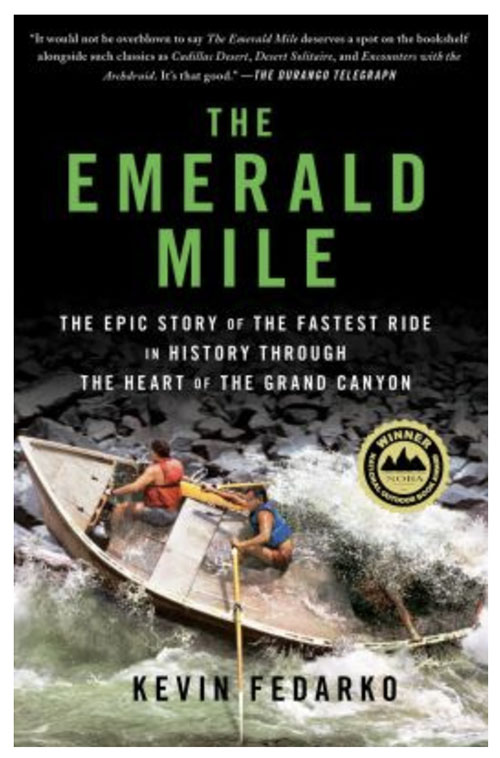 “He rowed them past the last of the stars. He rowed them clear of the night's embrace. He rowed them straight into and beyond the break of day. And somewhere along that stretch of river, he also rowed them across an invisible fault line, a seam on the American continent that separates the terrain where the ephemeral events of everyday reality unfold from a more rarefied and singular realm, the place where mythic and permanent journeys of the imagination, such as those of John Wesley Powell, reside—the place of legends.”
“He rowed them past the last of the stars. He rowed them clear of the night's embrace. He rowed them straight into and beyond the break of day. And somewhere along that stretch of river, he also rowed them across an invisible fault line, a seam on the American continent that separates the terrain where the ephemeral events of everyday reality unfold from a more rarefied and singular realm, the place where mythic and permanent journeys of the imagination, such as those of John Wesley Powell, reside—the place of legends.”
Saying that The Emerald Mile is a story about a speed run down the Colorado River is like saying the Grand Canyon is a crack in the earth. While technically true, neither statement does much justice. The Grand Canyon is vast and sprawling but elegantly cohesive, and Fedarko’s book about it is precisely the same. The Emerald Mile begins with a bunch of stupefied Spaniards setting their eyes in disbelief upon the canyon in the late 1500s and spares few historical details all the way up to Kenton Grua’s madman dash beneath a critically bulging Glen Canyon dam in 1983. Along the way, Fedarko expertly foils two emerging paradigms that meet in a head-to-head battle in Grua’s fateful run: the man and the river rat. The Emerald Mile is many things: historical treatise, political manifesto, geological rhapsody, and call to conservation. But more than anything, it is an invitation to action for star-struck adventurers with audacious ideas. As Fedarko says best, “‘Thou shalt not’ is soon forgotten, but ‘Once upon a time’ lasts forever.”
See The Emerald Mile by Kevin Fedarko
Truth, lies, and perhaps the greatest mountaineering hoax of all time.
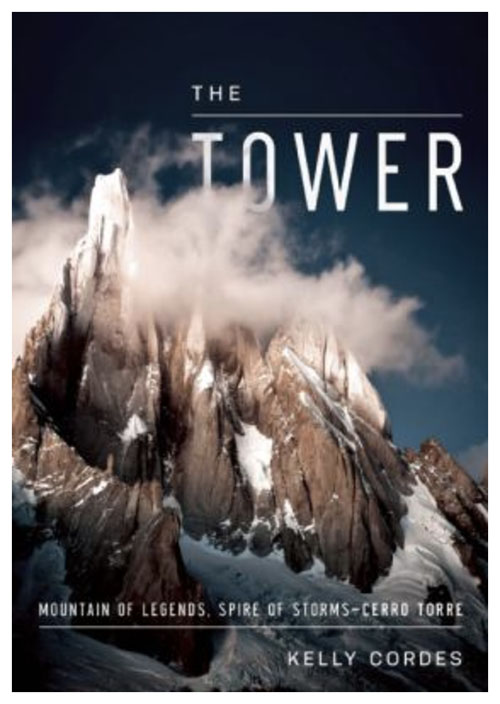 “Many of Maestri’s defenders are so earnest and often so likable. You’d love to agree with them. But the strength of both arguments—Poseidon-Zeus and Egger-Maestri—remains the same: You cannot absolutely prove that Maestri did not climb Cerro Torre, just as you cannot absolutely prove that Poseidon and Zeus did not rule the water and sky.”
“Many of Maestri’s defenders are so earnest and often so likable. You’d love to agree with them. But the strength of both arguments—Poseidon-Zeus and Egger-Maestri—remains the same: You cannot absolutely prove that Maestri did not climb Cerro Torre, just as you cannot absolutely prove that Poseidon and Zeus did not rule the water and sky.”
Cerro Torre in Argentine Patagonia may be the world's most iconic mountain for climbers and alpinists, and at one time, it was thought to be the most difficult. In 1959, the Italian Cesar Maestri—one of the most gifted alpinists of his generation—climbed this stunning pinnacle. Or did he? In the half century to follow, Maestri’s supposed climb became shrouded in more mystery and controversy than probably any other ascent in the history of the sport. How can all the evidence point against him? What really happened to his climbing partner Toni Egger? And what kind of a madman would haul a giant compressor up the most aesthetic piece of stone on the planet and drill a ladder of bolts? The author of this compelling investigation, Kelly Cordes, not only makes a strong case for what many believe actually happened on that fateful day in 1959, but also takes the reader on a journey through the inner workings of the mind of an alpinist. Maestri’s climb was either the greatest ascent in mountaineering history or the greatest hoax. This book is the definitive resource for determining the truth, and an extremely well-written and interesting one at that.
See The Tower by Kelly Cordes
The best-selling book about the world’s tallest mountain.
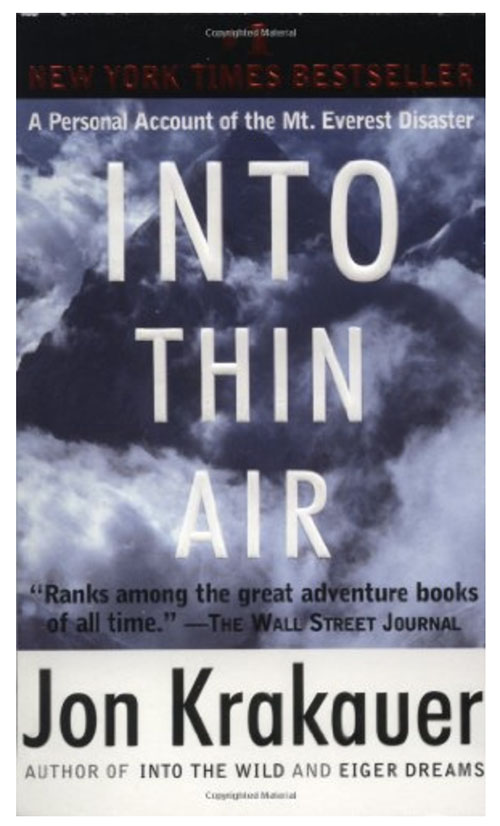 “With enough determination, any bloody idiot can get up this hill,” Hall observed. “The trick is to get back down alive.”
“With enough determination, any bloody idiot can get up this hill,” Hall observed. “The trick is to get back down alive.”
No place on Earth can match the high drama or intrigue of Mt. Everest—as we learn season after season, life truly hangs in the balance on the tallest mountain in the world. And of all of the books written about this dangerous peak, Jon Krakauer’s Into Thin Air is the one you must read. The book documents the infamous day in May of 1996 where eight mountaineers tragically lost their lives and many more were badly injured, but it’s so much more than that. It highlights the pitfalls of commercialism at the highest place on Earth, the fallibility of human nature and how even the best can have lapses in judgement with such a big prize in sight, and leaves the reader with as many questions as answers about that fateful day. Importantly, Krakauer is a brilliant writer and an actual mountaineer, which lends critical authenticity to his take on the events that took place (he also happened to be the only client in his expedition to survive the summit push that day). Perhaps more than anything, this book is a reminder that the outcome of adventure in the mountains is never certain. As Krakauer writes, “Climbing mountains will never be a safe, predictable, rule-bound enterprise. This is an activity that idealizes risk-taking; the sport’s most celebrated figures have always been those who stick their necks out the farthest and manage to get away with it.”
See Into Thin Air by Jon Krakauer
Part literary tour of the natural world, part exploration of the ethics of sustainability and conservation.
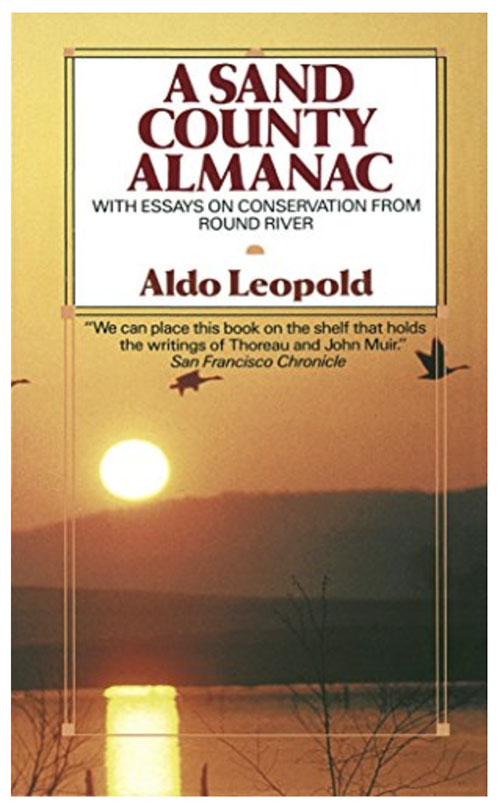 “Conservation is getting nowhere because it is incompatible with our Abrahamic concept of land. We abuse land because we regard it as a commodity belonging to us. When we see land as a community to which we belong, we may begin to use it with love and respect.”
“Conservation is getting nowhere because it is incompatible with our Abrahamic concept of land. We abuse land because we regard it as a commodity belonging to us. When we see land as a community to which we belong, we may begin to use it with love and respect.”
It might be a stretch to consider Aldo Leopold an adventurer, or his yeoman farmer’s lifestyle and humble forays upon his Wisconsin land as glamorous or ground-breaking. But it would be an unforgivable omission not to include his A Sand County Almanac in this collection of outdoor stories—if for no other reason than because he is one of the greatest advocates for wilderness of all time, and wilderness is the stage upon which most great adventures play out. A Sand County Almanac is an unforgettable introduction to the fields of ecology and conservation and though first published more than half a century ago, it remains relevant to this day.
See A Sand County Almanac by Aldo Leopold
A softly written but poignant story of human and environmental decay.
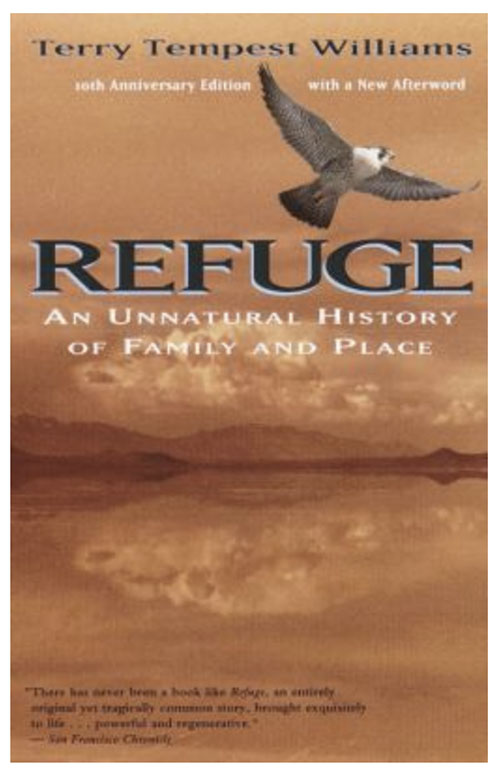 “The eyes of the future are looking back at us and they are praying for us to see beyond our own time. They are kneeling with hands clasped that we might act with restraint, that we might leave room for the life that is destined to come.”
“The eyes of the future are looking back at us and they are praying for us to see beyond our own time. They are kneeling with hands clasped that we might act with restraint, that we might leave room for the life that is destined to come.”
Writer, environmentalist, and activist, Terry Tempest Williams’ voice is strong no matter the medium she chooses. Her canon is over a dozen books deep, and in each she weaves robust knowledge and conviction so effortlessly into poetry and prose that it’s hard not to be totally enamored by her worldview. Refuge arguably is Williams’ most enduring work: the story of her mother’s losing battle with cancer and the environmental causes behind it, spun into a survey of the rising waters and changing bird habitats of the Bear River Migratory Bird Refuge outside of Salt Lake City. By the time you turn the last page, these two disparate narratives are almost inextricable and you care deeply about both. In all of her writing, Williams has a way of infusing heavy and saddening content with playfulness and beauty, entreating love and admiration rather than hatred and fear. Her voice is as vital now as ever.
See Refuge by Terry Tempest Williams
A physical and historical journey by kayak into the heart of Africa.
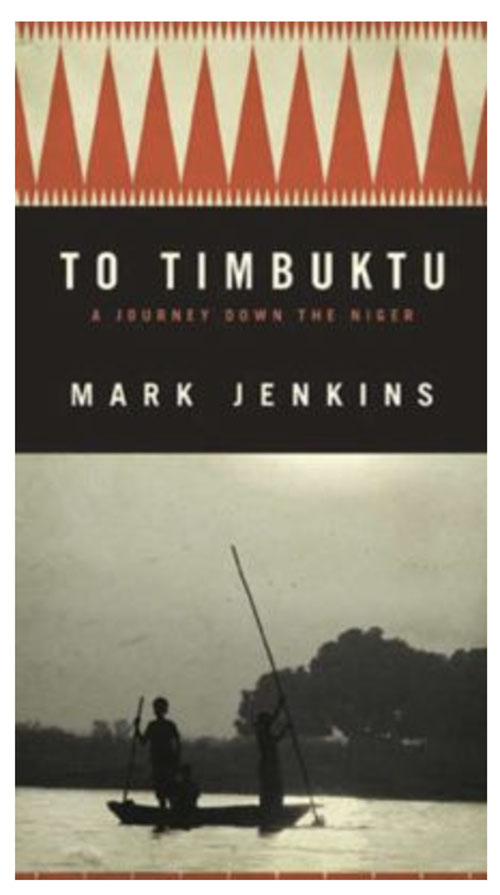 “In the warmth of your own kitchen pluck and mettle flow as easily as tap water. You don’t and won’t have to account for your hubris until you’re out there—when it’s too late to turn back...”
“In the warmth of your own kitchen pluck and mettle flow as easily as tap water. You don’t and won’t have to account for your hubris until you’re out there—when it’s too late to turn back...”
Some folks get bit by “the travel bug,” but you could say Mark Jenkins got devoured by a swarm of them. “We were just dirt and snow kids from the high plains of Wyoming when the rest of the world got lodged inside of us like an arrowhead too close to the spine,” he writes in one of his finest books, To Timbuktu. Jenkins has penned countless articles for National Geographic, Smithsonian, Men’s Journal, and other reputable publications over the years. But it is immediately evident that To Timbuktu is a story that has special significance to him, though we don’t really learn the full extent why until the final pages. Smooth as a kayak on glassy predawn waters, Jenkins’ tale takes us through the river of his life, interspersing a true adventure from the mysterious headwater of the Niger to the legendary town of Timbuktu with his own circuitous path through the preceding decades. Jenkins’ command of language is expert and spare in equal parts, but it is his unflinching credibility that gives this book its spine. You know you are in good hands as he spins his yarn, because it is abundantly clear that this man’s store of “pluck and mettle” far surpasses the norm.
See To Timbuktu by Mark Jenkins
A hilarious yet philosophical coming-of-age story set in the Pacific Northwest.
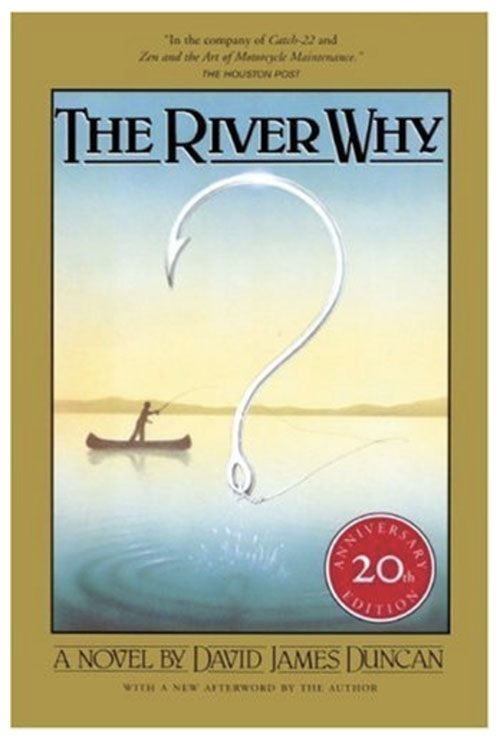 “And so I learned what solitude really was. It was raw material—awesome, malleable, older than men or worlds or water. And it was merciless—for it let a man become precisely what he alone made of himself.”
“And so I learned what solitude really was. It was raw material—awesome, malleable, older than men or worlds or water. And it was merciless—for it let a man become precisely what he alone made of himself.”
“Halfway into my twenties, I swapped the Bible out for The River Why, and my life has been richer, more colorful, and more filled with wonder ever since,” says Jenny Abegg, Editor at Switchback Travel. Now that’s as powerful a plug for a book as we’ve ever heard. And although The River Why is a fishing tale, we should note that Jenny has never picked up a fly rod in her life. The book—and all of Duncan’s work, for that matter—is about so much more. It spins lessons on wilderness, spirituality, and love into the story of Gus, a fishing-crazed high school graduate who eschews society to live in a shack on a remote northern Oregon river. His “ideal schedule” includes 14.5 hours of fishing a day, with 30 minutes carved out for food consumption “between casts or while plunking, if possible” (and, “non-angling conversation: 0 hrs.”). Duncan’s style is without comparison: both hilarious and deep, vibrant and complex. Yet even those descriptors are far too cliché to capture such an eclectic read. You simply have to see for yourself. Every person we’ve recommended this book to (and there have been many) would tell you the same thing.
See The River Why by David James Duncan
An easy-reading autobiography of one of climbing’s most notable women.
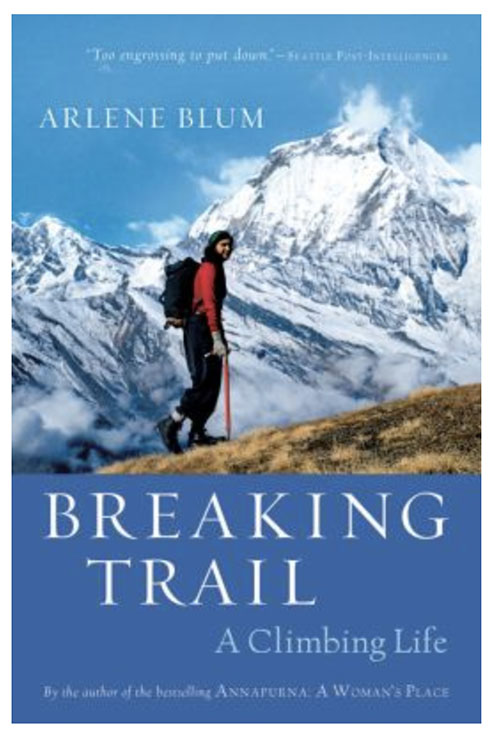 "John and I huddled together in the lee of a huge rock, the wind whipping the surface snow around us. As the first golden light of morning traveled from the top of Mt. Jefferson to the other Cascade summits and finally to us, I fell in love for the first time. I was in love with John, with Mt. Hood, with mountains, with life, with love itself.”
"John and I huddled together in the lee of a huge rock, the wind whipping the surface snow around us. As the first golden light of morning traveled from the top of Mt. Jefferson to the other Cascade summits and finally to us, I fell in love for the first time. I was in love with John, with Mt. Hood, with mountains, with life, with love itself.”
If you haven’t heard of Arlene Blum, look her up. Back in the 70s, she headed up the first all-female expedition to Denali, became the first woman to attempt Everest, and led a team of women to the summit of Annapurna I. But her book Breaking Trail is not your standard climbing-book fare, just as Blum is not your standard character. A biophysical chemist, mother, author, mountaineer, and activist, she insightfully weaves together stories from her dysfunctional childhood in the Midwest—years that informed the struggles and victories of her adult life—into her journey of discovering climbing at Reed College in Portland, Oregon, going on expeditions to the greater ranges, and spearheading important scientific research. Breaking Trail is more full-bodied than most climbing books; really, it’s a handbook for how to not back down in life, for men and women alike. Blum often is recalled for coining the phrase “A woman’s place is on top...,” but her pursuit of mountains had far less to do with conquest than the saying might suggest. “You never conquer a mountain,” she explains in Breaking Trail. “You stand on the summit a few brief minutes and then the wind blows away your footprints.”
See Breaking Trail by Arlene Blum
The true story behind Melville’s Moby-Dick.
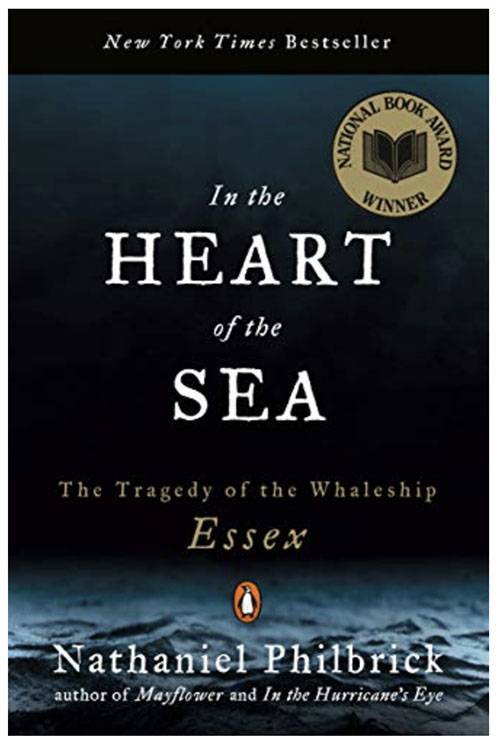 “First they saw bones littering the thwarts and floorboards, as if the whaleboat had been the seagoing lair of a ferocious, man-eating beast. Then they saw the two men. They were curled up in opposite ends of the boat, their skin covered with sores, their eyes bulging from the hollows of their skulls, their beards caked with salt and blood. They were sucking the marrow from the bones of their dead shipmates.”
“First they saw bones littering the thwarts and floorboards, as if the whaleboat had been the seagoing lair of a ferocious, man-eating beast. Then they saw the two men. They were curled up in opposite ends of the boat, their skin covered with sores, their eyes bulging from the hollows of their skulls, their beards caked with salt and blood. They were sucking the marrow from the bones of their dead shipmates.”
Herman Melville’s Moby-Dick is a universally heralded novel of great import, often touted as the finest American contribution to modern literature. And yet, comparatively few know (or would believe) that the climax of that novel is based upon a true event that happened to real humans deep in the middle of the Pacific Ocean in 1820. Philbrick’s tale of the whaleship Essex and the almost unfathomable survival of its shipwrecked crew is an exploration in the outer limits of human will (or, as the case may have been, puritanical stubbornness). The climax of this incredible survival story does not come with the destruction of the Essex by an enraged sperm whale, but with the hard-rationed journey back to shore that followed. As informative as it is evocative, as researched as it is colorful, this great novel truly elevates the nonfiction genre to uncommonly achieved heights of suspense and intrigue.
See In the Heart of the Sea by Nathaniel Philbrick
An author’s personal narrative interwoven with an incisive study of the earth beneath her.
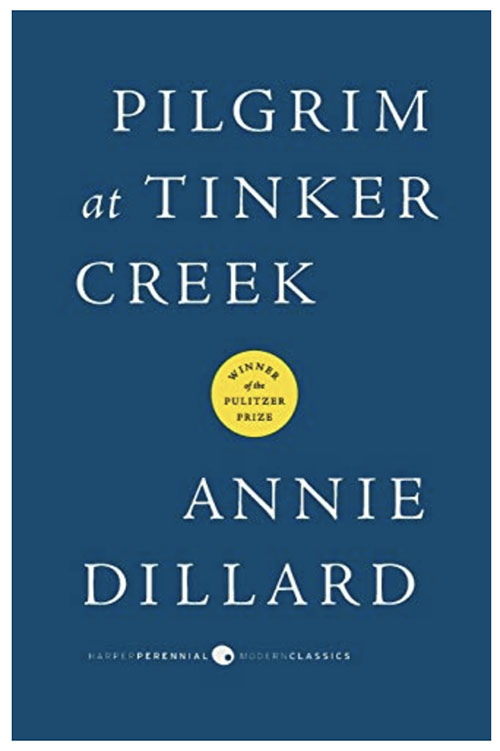 “After the one extravagant gesture of creation in the first place, the universe has continued to deal exclusively in extravagances, flinging intricacies and colossi down aeons of emptiness, heaping profusions on profligacies with ever-fresh vigor. The whole show has been on fire from the word go. I come down to the water to cool my eyes. But everywhere I look I see fire; that which isn't flint is tinder, and the whole world sparks and flames.”
“After the one extravagant gesture of creation in the first place, the universe has continued to deal exclusively in extravagances, flinging intricacies and colossi down aeons of emptiness, heaping profusions on profligacies with ever-fresh vigor. The whole show has been on fire from the word go. I come down to the water to cool my eyes. But everywhere I look I see fire; that which isn't flint is tinder, and the whole world sparks and flames.”
You might argue that spending a sojourn in a cabin along a little creek in southern Virginia doesn’t sound like much of an adventure. But if Annie Dillard heard you say that, she’d probably grab you by the ear and drag you to the ground to take a look at what’s going on in the mud—not out of pride, but out of wonder. Few writers are so deeply enamored with seemingly everything in the world than Annie Dillard. Tinker Creek may sound to you like a calm enough place, but it is populated by self-immolating moths, RNA molecules hellbent on building a praying mantis’s jaw bone, and the teeming fecundity of nature’s excessive and nearly lewd profligacy. For Dillard, the adventure is not without, but within. The final frontier is not the Arctic, or Everest, or the most isolated island in the Pacific. It is the grit and grime beneath our fingernails and our very noses. And while the journey there is not one many adventurers embark upon, Dillard makes a compelling case that it is, indeed, the more rewarding terrain to uncover.
See Pilgrim at Tinker Creek by Annie Dillard
One of the great mountaineering survival stories and a true page-turner.
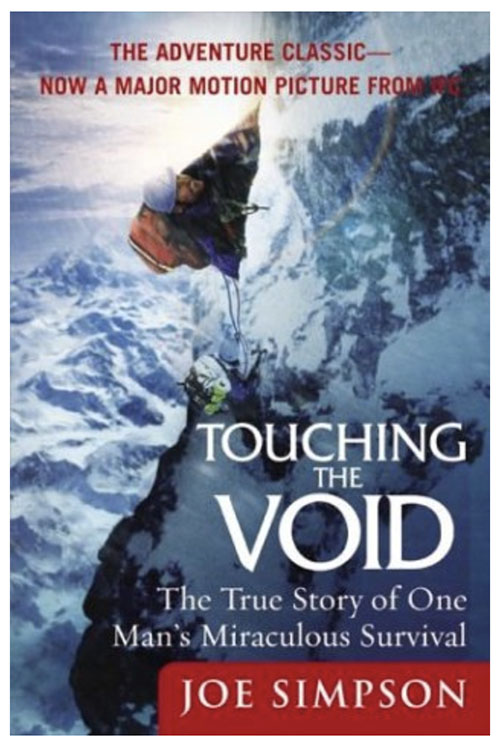 “If you succeed with one dream...it's not long before you're conjuring up another, slightly harder, a bit more ambitious, a bit more dangerous.”
“If you succeed with one dream...it's not long before you're conjuring up another, slightly harder, a bit more ambitious, a bit more dangerous.”
If Into Thin Air above is about death on the mountain, Touching the Void is about survival. The story seems improbable if not altogether impossible: two mountaineers are overdue on their descent in a remote region of Peru when tragedy strikes, and Simon Yates makes the heart-wrenching decision to cut the rope attaching him to his partner Joe Simpson. Simpson is badly injured and left for dead deep inside a crevasse, while Yates continues back to basecamp, devastated and alone. But this remarkable story does not end here—without giving it away (although the subtitle is awfully revealing), Touching the Void is one of the most remarkable and legendary survival stories in mountaineering. It also serves as a reality check in this often-glamorized sport and a reminder of how things can go horrifyingly wrong when you try to take on the world’s most inhospitable peaks.
See Touching the Void by Joe Simpson
An epic battle/adventure saga between man and fish.
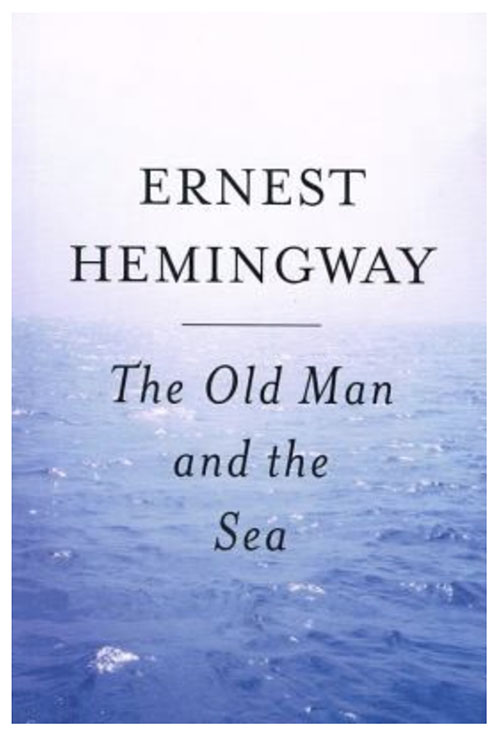 “He no longer dreamed of storms, nor of women, nor of great occurrences, nor of great fish, nor fights, nor contests of strength, nor of his wife. He only dreamed of places now and the lions on the beach. They played like young cats in the dusk and he loved them as he loved the boy. He never dreamed about the boy. He simply woke, looked out the open door at the moon and unrolled his trousers and put them on.”
“He no longer dreamed of storms, nor of women, nor of great occurrences, nor of great fish, nor fights, nor contests of strength, nor of his wife. He only dreamed of places now and the lions on the beach. They played like young cats in the dusk and he loved them as he loved the boy. He never dreamed about the boy. He simply woke, looked out the open door at the moon and unrolled his trousers and put them on.”
We know what you’re thinking: “The Old Man and the Sea? That’s not an adventure novel!” But if it’s not, then we would ask you, what is? This tale of man and fish has all the elements of an enduring epic, from hunger, thirst, and exhaustion, to man’s hubris and its attendant consequences. Perhaps never before has so much truth, meaning, and beauty been packed into so spare and tight a package. For aspiring adventure writers, The Old Man and the Sea may prove the ultimate roadmap to a successfully spun tale. The narrative arc is perfectly executed, the internal and external dialogue is eminently believable, and the overarching themes of conquest and humility run deep to the very core of the story. Anyone who thinks this book doesn’t fall into the category of adventure stories ought to spend a few days out on a skiff in the open sea, battling an oversized marlin (and later sharks). Personally, we’ll settle for just enjoying the read.
See The Old Man and the Sea by Ernest Hemingway
A thorough expository on the disappearing art of adventure by one of the genre's most accomplished and prolific writers.
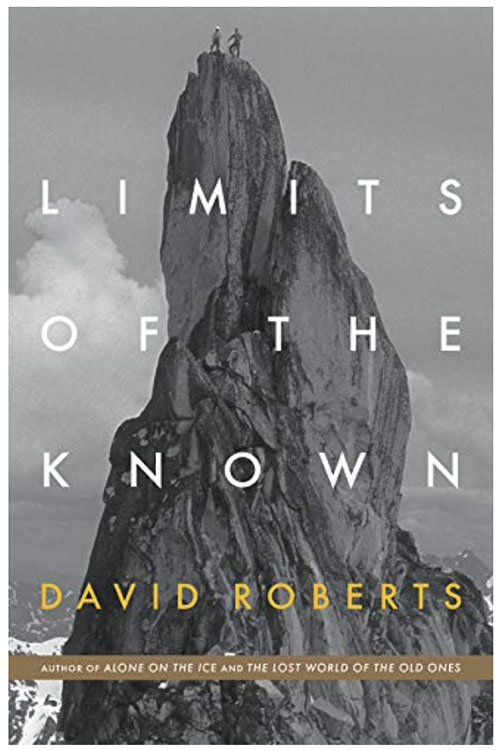 “Climbers and other explorers are notoriously inarticulate when it comes to explaining why they spend their lives pursuing phantom goals. Yet in the end, why is the ultimate question.”
“Climbers and other explorers are notoriously inarticulate when it comes to explaining why they spend their lives pursuing phantom goals. Yet in the end, why is the ultimate question.”
David Roberts has written over 25 novels about climbing, mountaineering, polar exploration, and other subjects circling around the central theme of adventure. His most celebrated books are probably his first two—The Mountain of My Fear, and Deborah—though he is equally well-known as Jon Krakauer’s mentor, and the co-author of Alex Honnold’s recent book, Alone On The Wall. But it's his latest book—Limits of the Known—that has us most enthralled. It’s not often that a soul as adventurous as Mr. Roberts takes the time to sit down and reflect on adventure in its various forms, through the past, here in the present, and away into the future. And yet, floored by cancer and unable to perform many of the physical feats he once loved, Roberts is forced to do precisely that. The result of his inquiry is one part polemic, one part apology, one part expository, and even perhaps a little bit prescriptive for the would-be adventurer of the 21st century. For those who would rather stand on the shoulders of their heroes than play in the sandboxes they created, there is no better place to start than with Limits of the Known.
See Limits of the Known by David Roberts
The classic story of man eschewing society to live closer to the earth.
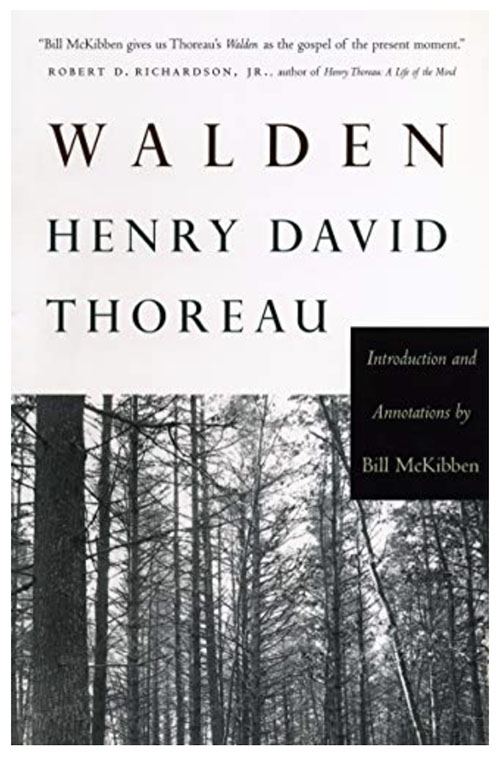 “Live in each season as it passes; breathe the air, drink the drink, taste the fruit, and resign yourself to the influence of the earth.”
“Live in each season as it passes; breathe the air, drink the drink, taste the fruit, and resign yourself to the influence of the earth.”
We will end this article with a book that some would argue could have started it. Walden was published all the way back in 1854 and represents one of the original books of philosophy centered on the natural world. Similar to Abbey, Muir, and Dillard above, Walden represents a deep reflection on the outdoors and the grand study of the many micro-events that take place each day. This enduring work does have its fair share of criticizers, who call out the author’s hypocrisy, question his authenticity, and wonder at his motivations to embark on the social experiment of living in a remote, rustic Massachusetts cabin owned by friend Ralph Waldo Emerson. Regardless of the book’s shortcomings, we appreciate the central tenants of living simply in nature, deep observation, and self-sufficiency. Love it or hate it, Walden perseveres.
See Walden by Henry David Thoreau